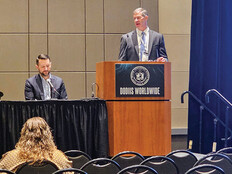Page by Page
Green computing is not only good for the environment, but also good for your agency’s budget. One area to focus on is printing, where small steps taken by each office or bureau can have a big impact.
Tip 1: Analyze Paper and Printer Use
First, identify areas where your organization can reduce paper waste. According to Gartner, the sheer number of printing devices in use — 178 million printers, copiers and multifunction devices were shipped in 2007 — has a negative impact on the environment.
Gartner suggests the solution hinges primarily on behavioral changes: Organizations should print less and train their employees to conserve. As an example, Gartner cites hospital admissions. Typically, hospitals distribute preprinted, multipart government healthcare forms to patients upon arrival. This process generates paper waste by using the second and third parts of the multipart form for records storage and by preprinting forms that become obsolete and have to be thrown away.
So first things first: Determine what, when, how and why your employees print documents.
Tip 2: Print Forms on Demand
Many government offices can eliminate sources of waste by using multifunction printers instead of preprinted forms. MFPs can print forms on demand, print confidential documents with watermarks and print documents securely.
Electronic versions of documents, rather than carbon copies, can be routed to other departments or agencies within a federal or state system for storage. An MFP also eliminates waste from obsolescence because it always prints the latest version of any form and prints each form at the time of use.
Tip 3: Select Print Options Wisely
MFPs that consolidate the functions of several energy-consuming devices can help organizations use less. Setting duplex printing by default automatically reduces the amount of paper consumed, and reference documents can easily be printed with multiple “pages” on a single sheet because these forms are often less than a full sheet in size.
One particularly useful feature is the proof-then-print option. This lets a user send a multiple-copy print job to the printer, which first prints a single copy for proofing. If the proof is acceptable, the user can continue the job from the printer without returning to his or her workstation, saving time and avoiding multiple wasted copies.
In most cases, there’s no added cost for adopting these measures. Agencies simply need to choose eco-conscious manufacturers and then implement specific features to reap the benefits. The payoff for such investments and practices includes using less energy, sending less paper to landfills, reducing the carbon footprint and saving money.







